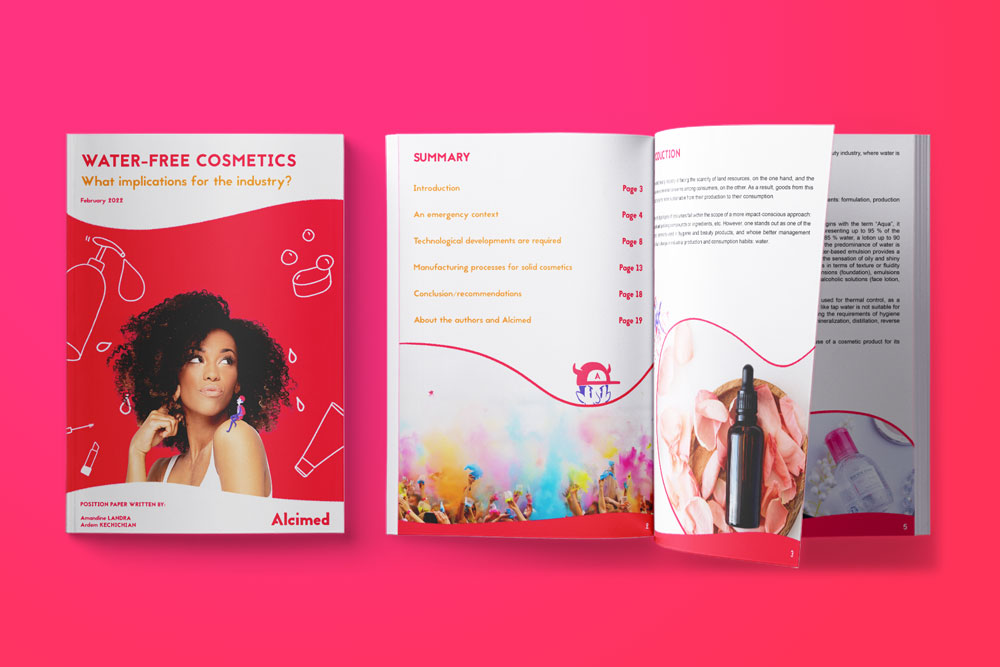Alcimed Position Paper – Waterless cosmetics: what are the impacts on manufacturers?

The hygiene and beauty industry is facing the scarcity of land resources on the one hand, and the emergence of environmental concerns among consumers on the other hand. As a result, cosmetic products from this industry must become more sustainable, from production to consumption.
What are the industrial impacts of a decreased usage of water in cosmetic products?
Several typologies of resources fall within the scope of a more impact-conscious approach: plastics, cardboard, polluting compounds or ingredients, etc.
However, there is one that stands out as one of the elements most commonly used in hygiene and beauty products, and whose better management implies a thorough change in production and consumption habits: water.
Manufacturers have a role to play, particularly in the hygiene and beauty sector where water is usually found at each step of the lifecycle of a product.
From the optimization of the manufacturing process to the optimization of the product itself
So far, innovations for better quality water management have mainly targeted the manufacturing process in order to disrupt as less as possible consumer habits. Nevertheless, it is harder and harder not to impact the cosmetic product formulation in order to go further in the minimization of the environmental impact through the reduction of water use.
This position paper provides key elements for cosmetics manufacturers in order to develop waterless products for their customers and differentiate themselves from the competition.
In this position paper, you will explore:
- What are the most popular waterless galenics for cosmetics manufacturers?
- How do these galenics impact the manufacturing process?
- What are the technical challenges manufacturers will have to face?
- What processes have been tried and tested in other sectors?
- First business elements to consider before marketing waterless cosmetics.